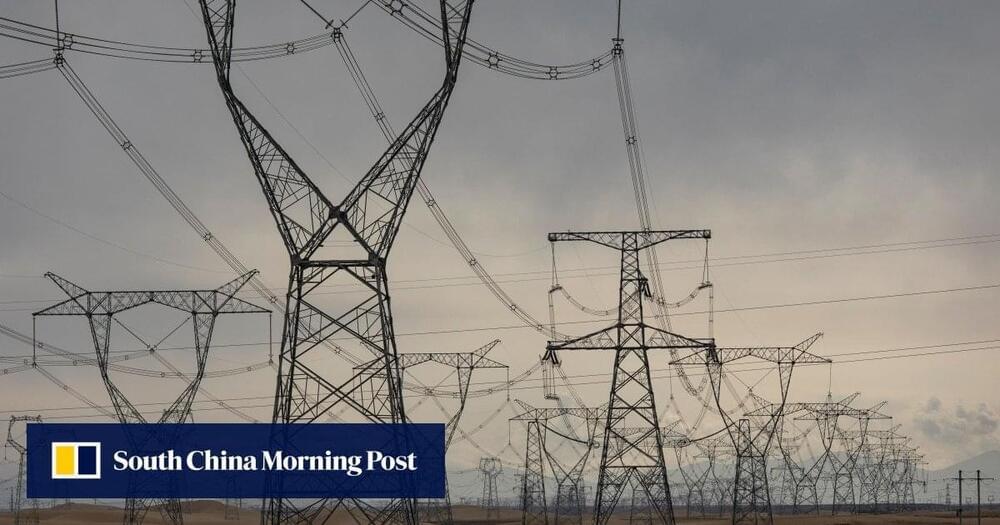It tastes like a tomato, smells like a tomato, and even looks (mostly) like a tomato. There’s just one catch: It’s purple.



Making a rainy day fun. bigsmile
PANTONE recently collaborated with the School of the Art Institute of Chicago’s designers and art directors to transform Seoul, Korea’s streets during the dreary monsoon season. The appropriately titled Project Monsoon venture began with the creative team painting Seoul’s somber roads with hydrochromic paint–a type of paint that changes from transparent to opaque when it gets wet–to form colorful murals inspired by South Korean culture. East Asian customs focus on the river and its elegant flow, which is exactly what the designers wanted to capture in their public works of art. These exuberant pieces are then unexpectedly unveiled as rain falls from the cheerless gray sky and the water droplets come in contact with the ground.
Join us on Patreon!
https://www.patreon.com/MichaelLustgartenPhD
Quantify Discount Link (At-Home Blood Testing)
https://getquantify.io/mlustgarten.
TruDiagnostic Discount Link (Epigenetic Testing)
CONQUERAGING!
https://bit.ly/3Rken0n.
Bristle Discount Link (Oral microbiome quantification):
ConquerAging15
https://www.bmq30trk.com/4FL3LK/GTSC3/
Cronometer Discount Link (Daily diet tracking):
https://shareasale.com/r.cfm?b=1390137&u=3266601&m=61121&urllink=&afftrack=
Support the channel with Buy Me A Coffee!
Hp has unveiled HP SitePrint, a robotic solution that autonomously prints the most complex construction site layouts with pinpoint accuracy. The company claims the bot can finish a layout in a “fraction” of the time humans require – improving productivity by as much as ten times.
HP SitePrint is an end-to-end, easy-to-use suite of technologies designed to automate the site layout process. It consists of a rugged and autonomous robotic device designed to operate in the conditions of the construction site. With the help of a remote control tablet and cloud tools, the machine can outline walls, doors, and other elements with little intervention.
Designed for autonomous operation, including obstacle avoidance, HP SitePrint can improve the productivity of the site layout process. It can print lines and complex objects with pinpoint accuracy and consistent repeatability, while text printing capabilities bring additional data from the digital model to the construction site, improving communication between construction professionals.

Were you unable to attend Transform 2022? Check out all of the summit sessions in our on-demand library now! Watch here.
Many organizations lack the technology and architecture required to automate decision-making and create intelligent responses across the supply chain, as has been shown by the past few years’ supply chain disruptions. However, these critical breakdowns can no longer be blamed solely on the COVID-19 pandemic. Rather, they can be blamed on businesses’ slow adoption of automated supply chain decision-making, which has resulted in inventory backlogs, price inflation, shortages and more. Further contributing to backlogs is continued single sourcing to one region rather than leveraging distributed regional capabilities. These factors have added to the complexity of systems and the disadvantages of lack of automation and the pandemic brought these existing critical breakdowns into stark relief.
This brings us to today and how this inability to effectively manage data streams is proving debilitating to many companies. In a Gartner study of more than 400 organizations, 84% of chief supply chain officers reported that they could service their customers better with data-driven insights. An equal number of respondents stated that they needed more accurate data in order to predict future conditions and make better decisions.



The word “intriguing” is being used to describe Perseverance results coming from sedimentary rocks on Mars that are of the same type known for preserving fossils and evidence of life here on Earth.
When NASA landed the Perseverance rover on Mars complete with an instrument package capable of identifying organic molecules, the Agency chose the Jezero Crater, the site of an ancient water-formed delta dating back 3.5 billion Earth years. The goal was to look for signs of ancient Martians, not the Martians of H.G. Wells’ “War of the Worlds,” but rather microorganisms like the ones that killed off the Martians after they arrived.
Onboard Perseverance is an instrumentation package that goes by the acronym SHERLOC which stands for Scanning Habitable Environments with Raman and Luminescence for Organics and Chemicals. Using SHERLOC, Perseverance has been sampling sedimentary rocks laid down by the water that flowed on the Martian surface earlier in its history.
What does the presence of organic molecules in samples tell us about the existence of past or present life on Mars? Although organic molecules may form from chemical processes where life is not present, it usually is a good sign of its existence. And Perseverance isn’t the first Martian lander or rover to discover organic molecules. The Viking landers, and now defunct rovers, Spirit, and Opportunity, have all indicated that Mars could or did harbour life in the past. Curiosity, the other active Martian rover in the Gale Crater has made similar discoveries. The difference between the two rovers, however, is one of both quantity and quality when looking at the Perseverance samples. Perseverance has found far more organic molecules than its sister rover and is caching the samples for a future mission to find, gather and return to Earth for study.


Were you unable to attend Transform 2022? Check out all of the summit sessions in our on-demand library now! Watch here.
There is a quiet yet fierce battle being fought by technology heavyweights. They want to consolidate the exponentially increasing RPA (robotic process automation) market and the sizable investments users are making, which continue to grow. According to recent research, organizations on average spend $480,000 on RPA annually, with those in the highest tier spending well over $1 million on automation every year.
With a market of that size and all indications being that automation will only get bigger, it’s no wonder the likes of Microsoft have entered the fray to duke it out with perennial leaders Automation Anywhere, UiPath and Blue Prism, raising the question: Who will come out on top?